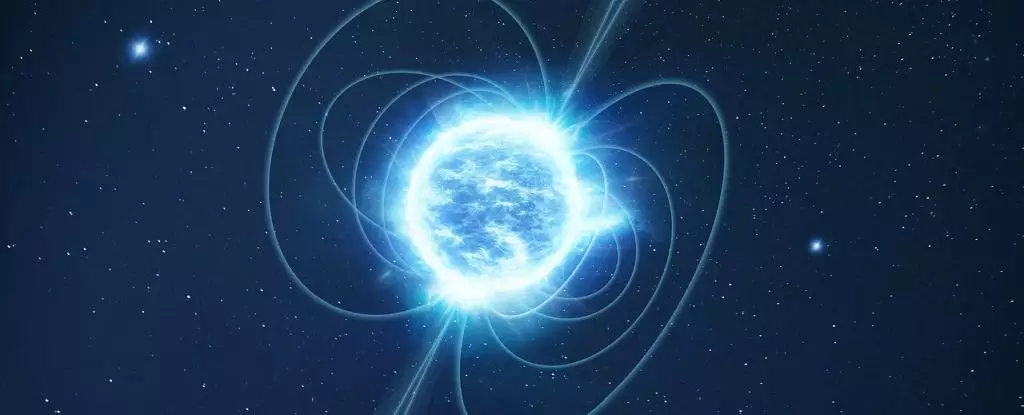In the vast and intricate framework of our cosmos, few phenomena spark as much curiosity and awe as magnetars. These extraordinary neutron stars possess magnetic fields millions of times stronger than any found on Earth, and SGR 0501+4516 has recently catapulted itself into the spotlight of astrophysical study. Recent investigations utilizing the Hubble Space Telescope and the now-retired Gaia mission have thrust SGR 0501+4516 into a state of compelling mystery, challenging long-standing theories about how these celestial giants come into existence.
A Departure from Established Theories
Historically, the prevailing thought among astronomers has held that magnetars form through high-energy events known as core-collapse supernovae. A neutron star, the dense remnant of a massive star after it exhausts its nuclear fuel, is created following these explosive endings. Researchers had drawn a direct line between SGR 0501+4516 and the supernova remnant HB9, assuming an inevitable link between the two. The gravitational dance of this magnetar’s presence near HB9 seemed to validate this theory, as the remnants of a supernova typically linger long after the explosion.
Yet, the meticulous work of researchers, led by Ashley Chrimes of the European Space Agency, has derailed this assumption. By employing data from Hubble’s imaging capabilities and the astrometric precision of Gaia, the team revealed that SGR 0501+4516’s velocity and movement patterns disassociate it from HB9. This revelation begs the question: if not formed through a core-collapse supernova, how did SGR 0501+4516 come into being?
Puzzle Pieces of Formation Mechanisms
The implications of these findings are profound. Astronomers are compelled to reconceptualize the formation mechanisms of magnetars. One possibility is that SGR 0501+4516 is considerably older than previously estimated, allowing ample time for its associated remnants to fade into the cosmic expanse. However, this interpretation raises questions about the lifecycle of magnetars themselves. Commonly understood as transient entities that exist for only a brief period in the grand scheme of cosmic events, it’s paradoxical to suggest that a magnetar could survive well beyond its expected lifespan.
Alternatively, researchers have speculated a more novel origin: the potential merger of existing neutron stars or, intriguingly, a white dwarf transitioning into a neutron star under specific conditions. The latter presents an electrifying scenario where a white dwarf, typically a remnant of a less-massive star, engages in a gravitational interaction with a binary companion. Should this transfer of material occur excessively, the white dwarf could, instead of exploding as a supernova, collapse into a neutron star—the birth of a magnetar.
A Unique Cosmic Identity
The re-examination of SGR 0501+4516 could redefine our categorization of magnetars within the stellar taxonomy. Its significance becomes even clearer when one considers that fewer than 30 such entities have been documented within our Milky Way galaxy. If the formation mechanism of SGR 0501+4516 deviates from the established narrative, it may represent a new archetype of magnetar genesis, one that could illuminate untapped avenues of inquiry within astrophysics.
Additionally, the implications of this discovery extend beyond just magnetars, touching on core questions regarding stellar evolution and the lifecycle of massive stars. Understanding how stars of varying masses transition through different stages of existence enriches our understanding of the universe’s grandeurs, from the vast dance of galaxies to the seemingly mundane yet pivotal role of stellar remnants.
Broader Perspectives on Cosmic Evolution
This investigation into SGR 0501+4516 isn’t just an isolated case; it serves as a heralding bell for the ongoing exploration of celestial phenomena. Each reveal about magnetars shifts the lens through which we view stellar life cycles and the cataclysmic events shaping our universe. Enigmatic as ever, magnetars like SGR 0501+4516 compel astronomers to question foundational astrophysical principles, urging a continuous reassessment of what we think we know.
In the grand narrative of the cosmos, this evolving tale of SGR 0501+4516 invites researchers and enthusiasts alike to embrace complexity and uncertainty. The universe still harbors countless secrets, and it is the relentless pursuit of these mysteries that fuels scientific discovery and expands the frontiers of human knowledge. As we continue to observe, analyze, and theorize, the truth of SGR 0501+4516 not only beckons our curiosity but also offers a tantalizing glimpse into the hidden mechanisms that govern the swirling galaxies above.


Leave a Reply